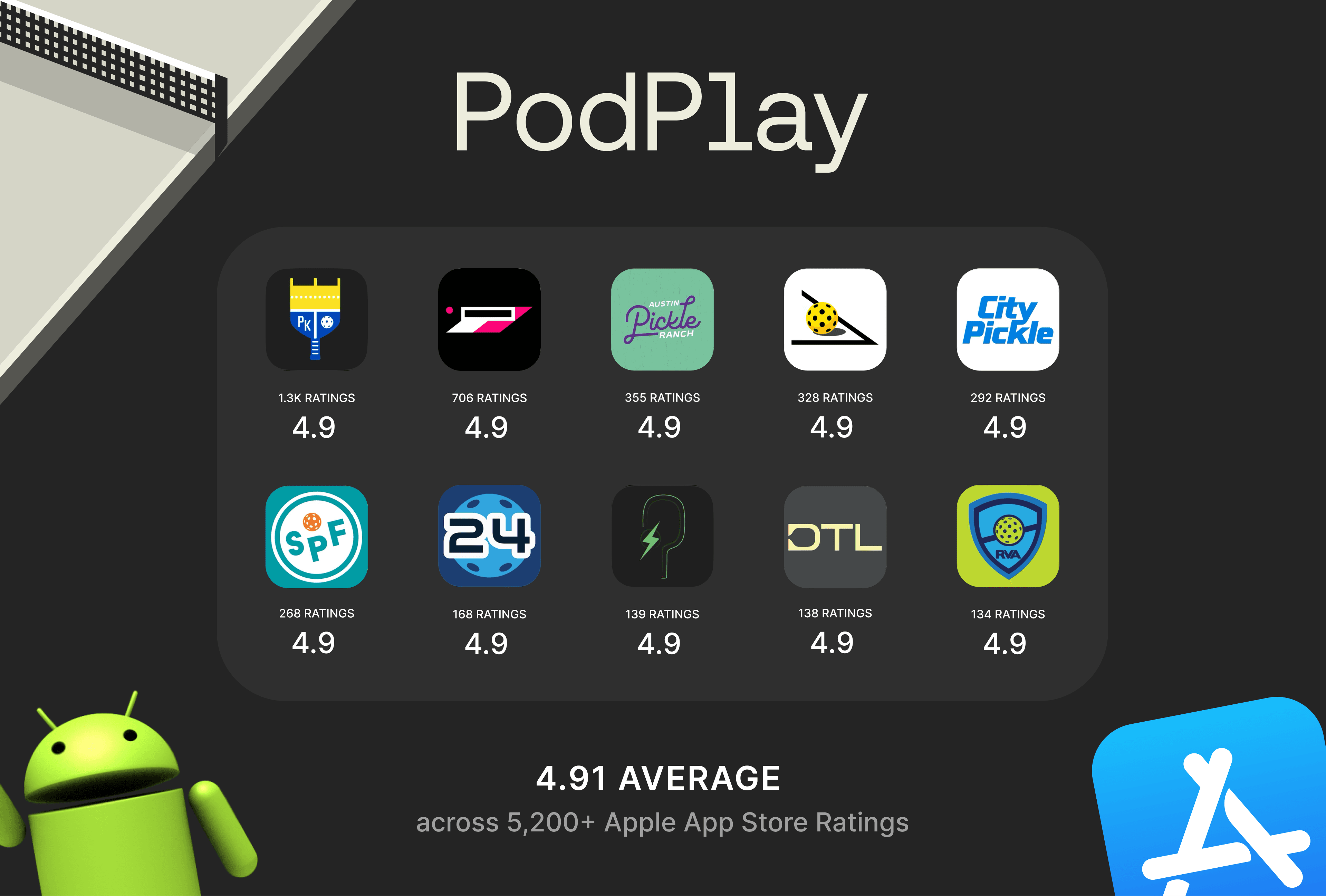

“All pickleball booking software is the same.”
If you believe the above statement, this blog is not for you, and I would be happy to direct you to the cheapest provider in the market. And, I think you would be making a mistake.
To date, the demand for quality pickleball courts in the United States has so far outstripped supply that “being open” has been enough to attract a thriving community of players. Without competition, many clubs have gotten away with providing a subpar customer experience.
That is changing.
In their 2024 State of Pickleball: Participation & Infrastructure Report, Pickleheads and SFIA estimated that the U.S. will need to spend $855 million over the next 5-7 years to reach one dedicated court per 500 participants. “Now in our second year of this report, we can see the pickleball industry has responded to the court shortage challenge by adding infrastructure, with dedicated pickleball facilities growing 55% year-over-year,” states Brandon Mackie, Co-founder and COO, Pickleheads. “Still, there remains a long road of investment ahead with $855 million needed to construct courts over the next 5-7 years.”
Not surprisingly, many businesses have emerged to meet that demand. In his article The Business Strategies Behind the Exploding Indoor Pickleball Club Market, Forbes writer Todd Boss did a deep dive on many of the major players in the indoor pickleball club boom and posed the question: are there too many indoor facilities being built?
Whether or not you believe the market is nearing a point of saturation, it is clear that market forces are working to bring supply and demand into balance. When that happens, “being open” will no longer be a competitive advantage. Clubs will compete on the experience they create for customers.
The front door to that experience is your booking app. Delight your customers and they arrive at your club predisposed to love it. Frustrate them and they may not even complete a booking.
So when do your customers form a first impression of your pickleball club?
For the vast majority of customers, it is when they book their first court reservation, open play, or clinic on their phone. That first interaction plays an outsized role in establishing your club’s brand. Jeff Bezos says that, “Your brand is what people say about you when you are not in the room.”
Do you want your customers to think of you as cheap, non-branded, difficult, and non-intuitive? Or modern, branded, intuitive, and customer friendly?
At PodPlay Technologies, we obsess over creating the kind of customer experience for end users that is so good they want to tell others about it.
PodPlay has grown rapidly without a sales team. We have been able to do so by focusing on two things: content that helps club owners make smart business decisions and a product experience that drives word-of-mouth for the clubs we serve and PodPlay.
How do we do it?
We believe the keys to creating a great first impression are:
These principles are better experienced than described. The following video will give readers a taste of PodPlay design principles in the wild:
How do end users feel about the experience? PodPlay apps recently crossed 5200 ratings on the App Store with an average rating of 4.91:

So why are we open sourcing our app design thinking in this blog? We believe we are uniquely positioned to deliver on these principles because of our team, our history, and our corporate structure.
PodPlay clients may be venues, but we believe we will serve them best by designing an amazing experience for their customers. Our goal, as it has been from Day 1, is to build and refine a system that is highly functional but intuitive and delights customers. True to our roots as a consumer company, the technology we build for PodPlay clients is squarely a B2B2C offering.
PodPlay gives venue operators all the tools they need to digitally manage a physical space - integrating video replays, digital scoreboards, and autonomous functionality with a reservation engine, event management, coach connect, membership module, and payments.
Originally built to power PingPod, the network of futuristic autonomous ping pong clubs, PodPlay is now being used to manage venues across pickleball, padel, ping pong, golf simulators, tennis, cricket, soccer and pool, with more experience verticals to come in the future.
If you’re interested in learning more, request a demo.
Autonomous experiences have flourished indoors, where we can control for weather, heat, and access. Outdoors–the largest segment of pickleball play–remained unsolved. The result: operators were forced to choose between the flexibility of outdoor courts and the efficiency of automation. Until now. PICKLETILE™ x PodPlay unlocks outdoor autonomous pickleball.
Dec 8, 2025
Originally developed to power PingPod's autonomous table-tennis clubs, PodPlay has quickly expanded to meet demand in pickleball and is now the preferred premium solution for modern, tech-driven venues. We strongly believe that the best software is built with empathy - and the best way for us to build with empathy is to be customers ourselves.
Nov 20, 2025